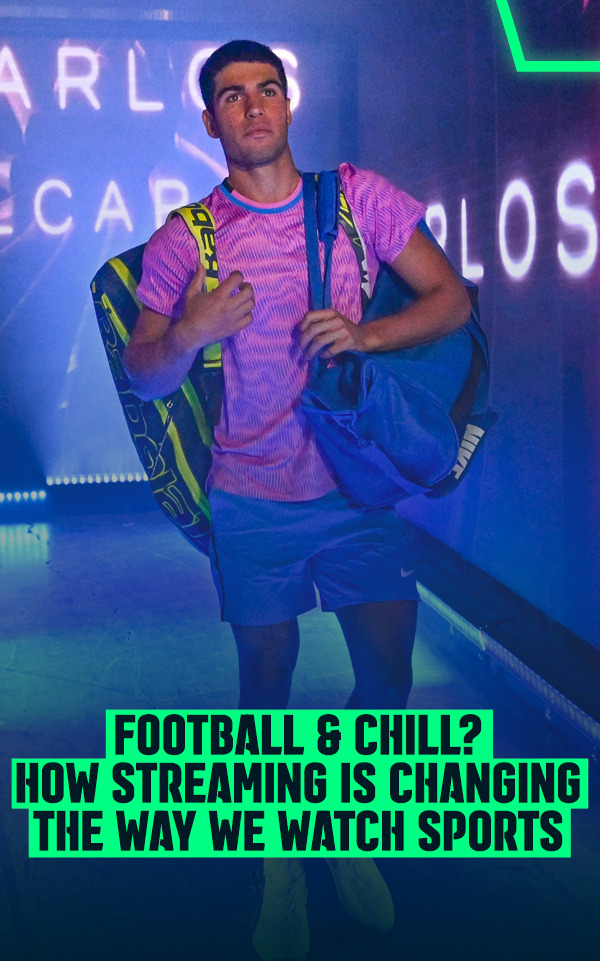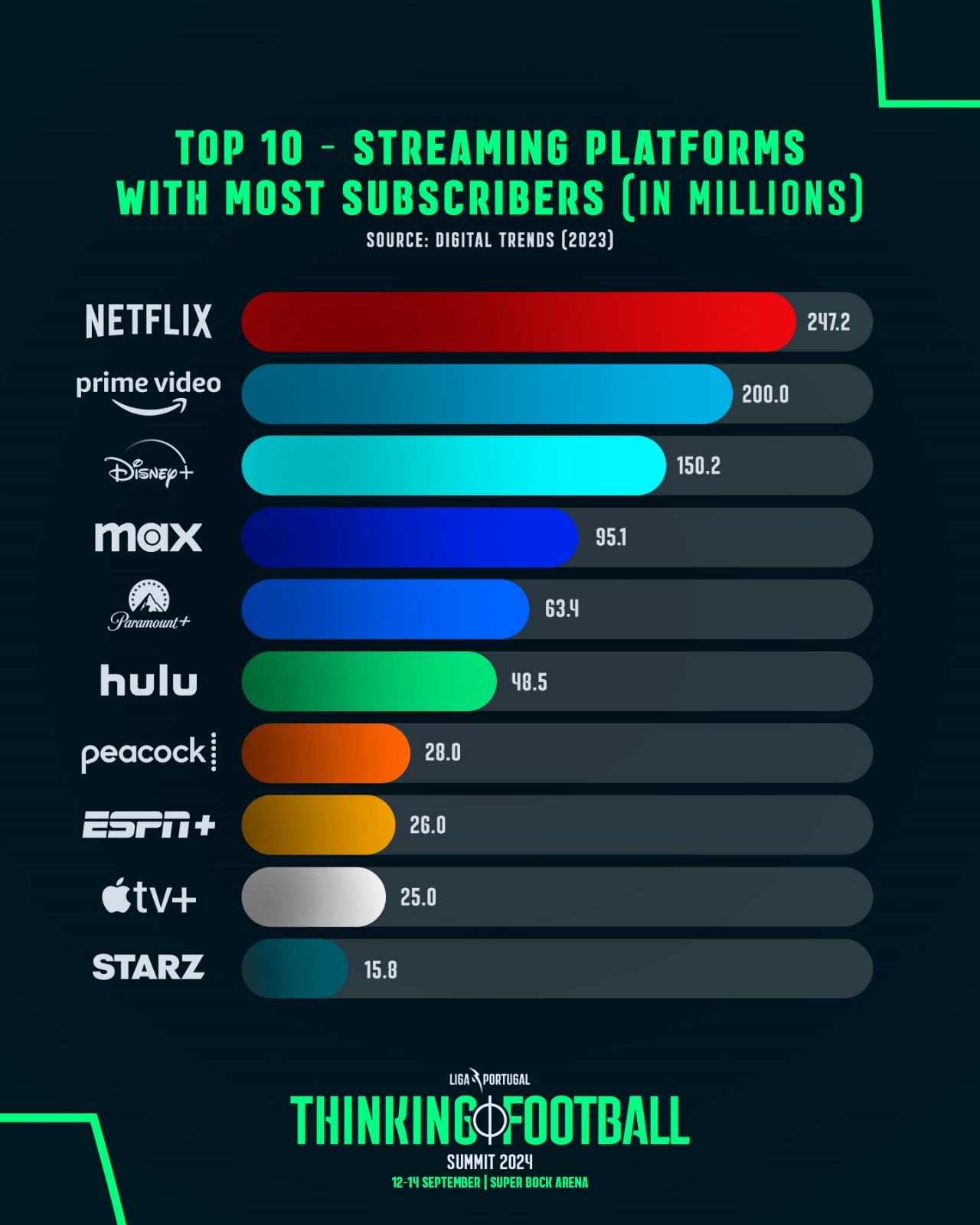Football & Chill? How streaming is changing the way we watch sports

Football & Chill? How streaming is changing the way we watch sports
In 1936, after the first televised Olympic Games, Germany, the tournament's host country, also organized what would become the first televised football match in November, a friendly between the German and Italian national teams that ended in a 2-2 draw. If 88 years ago the king of sports transitioned from the stadium to television, in 1969 it gained color, through the British BBC, which 'painted', for the first time, the broadcast of a football match, a meeting between Liverpool and West Ham United. Today, football, and not only, is moving from televisions to smartphones, tablets, and computers; at the same time, it is also leaving the television 'box' for streaming platforms.
The trend began even before the pandemic when the potential of live streaming broadcasts began to show their versatility, as they could provide a different experience for sports fans, expand the audience, attract more sponsors, and consequently, generate more revenue. Before the world stopped to combat a virus, we saw many traditional channels launching their own platforms to meet this trend. However, the 'game' changed definitively when, in 2020, streaming platforms went from being a place to visit at the end of the day or on weekends to becoming daily companions; according to the Motion Pictures Association report, during this period, there was a 26% increase in platform subscriptions.
In response to the increased demand, platforms responded with an increase and diversification of offerings, which included entering the race for broadcasting rights for sports events and competitions. In the United States, Lionel Messi's arrival in MLS led Apple, through Apple+, to pay 2.5 billion euros to be the main broadcaster of the top tier of American football for 10 years. In Mexico, Paramount+ holds the rights to some of the main sports competitions, including the NFL, NBA, Champions League, or the Premier League. In India, Viacom18 acquired the national digital rights for Indian Premier League (IPL) cricket matches in a five-year deal valued at 3 billion dollars.


 Today, on a more global level, we see Netflix organizing and broadcasting its own sporting events. First, there was the Netflix Cup, a unique format that brought together golf players and F1 drivers, followed by the Netflix Slam, which pitted tennis icon Rafael Nadal against Carlos Alcaraz, the current biggest promise in world tennis, and, at the moment, there is already a third event on the calendar: the boxing match between Jake Paul and Mike Tyson.
Today, on a more global level, we see Netflix organizing and broadcasting its own sporting events. First, there was the Netflix Cup, a unique format that brought together golf players and F1 drivers, followed by the Netflix Slam, which pitted tennis icon Rafael Nadal against Carlos Alcaraz, the current biggest promise in world tennis, and, at the moment, there is already a third event on the calendar: the boxing match between Jake Paul and Mike Tyson.
It's no coincidence that at the end of 2022, Deloitte addressed the topic in this way: "Live sports: The next arena for the streaming wars". And it emphasized: "Both streaming providers and sports organizations have much to gain from a growing symbiosis. Faced with increased competition and subscriber churn, many streaming providers are using live sports broadcasting as a differentiator to help attract and retain subscribers. At the same time, providers also want to use live sports events to attract advertisers, who see these audiences as a smart investment. Sports organizations, on the other hand, want to further monetize their rights, expand access to products, and reach younger consumers."
Prices of broadcasting rights stabilize, but TVs are less willing to 'shell out' hundreds of millions of euros.
The television rights market in Western Europe, the region that hosts the so-called top 5 football leagues, shows signs of stagnation and, in some cases, devaluation, at least in relation to the self-assessment that the competitions make of themselves. The most paradigmatic case of this was the negotiation of Serie A rights, acquired by DAZN and Sky Sports in October 2023 for 4.5 billion euros for the period between the 2024/25 and 2028/29 seasons, generating revenue of 900 million euros per season, a deal much lower than the one projected by the competition's organization, which intended to sell the same rights for 3.6 billion euros for three years or 7.2 billion euros for five years.
With statistics highlighting a decrease in TV advertising revenue – down 9% over five years, according to Ampere data – as well as a stagnation in subscriptions to pay channels – between 2015 and 2024, in Western Europe, subscriptions to pay channels went from about 113 million subscribers to 118 million, with projections showing that from 2025 this number will start to slightly decrease, unlike streaming services which surged from 29 million subscribers in 2015 to 252 million in 2024, with projections for a subscriber base exceeding 270 million by 2026 – it is easy to perceive a reality in which traditional media are less available to enter the fray for these championships, especially when faced with a fast-growing sector on the other side.
But what numbers are we talking about? The league that generates the most revenue is the British Premier League, whose current television rights package was acquired for a period of three years, from 2022/23 to 2024/25, for 5.3 billion euros, by Sky Sports, TNT, and Amazon Prime, with the sale of rights for the period between 2025/26 and 2028/29 already negotiated for 7.2 billion euros, which will correspond to an annual value of 1.8 billion euros, slightly above the 1.75 billion euros annually resulting from the current deal; and curiously lower than the 1.84 billion euros per season resulting from the package negotiated for the period between 2016/17 and 2018/19.
Next comes the Bundesliga, which will be the next of the top 5 to enter the market for negotiating television rights, as the league that generates the most revenue: the current agreement allows for raising 1.10 billion euros per season. Then comes La Liga, which generates 980 million euros in revenue per season, Serie A with 930 million euros annually, and finally Ligue 1 with 666 million euros annually.
The French case is the most paradigmatic example that the European market has reached a saturation point. The television rights package covering the seasons between 2020/21 and 2023/24 were sold for 4.6 billion euros, in a memorable deal that fell through due to non-payment by MediaPro, the company that acquired the television rights. After the deal collapsed after one season, the remaining three years were put up for auction and only reached 1.99 billion euros.
In streaming, games are just the tip of the iceberg.
Even before broadcast rights values stabilize and become more appetizing for streaming brands, it cannot be said that these platforms were not looking at sports in general. After all, some of the biggest documentary successes in recent years have come from that same theme, F1: Drive to Survive (Netflix), All or Nothing (Amazon), or Sunderland 'Til I Die (Netflix) are perfect examples of this. Today, content production covers the main stories – the growth of Wrexham, since it was acquired by Ryan Reynolds and Rob McElhenney, has been followed by Disney+ – and the major tournaments – just recently, Netflix released the documentary series "World Captains" which, a year later, revisits the 2022 Qatar World Cup.
But none is a greater example than Drive to Survive of how investing in these contents, and the symbiosis between the world of sports and streaming, can change the reality of a sport. In 2017, when F1 was acquired by Liberty Media, the fame of Formula 1 was at such low levels that the broadcast rights of the races were offered to ESPN as a way to gain visibility in the American market. At the time, according to channel data, there were about 554 thousand viewers per race. In 2021, when the third season of the Drive to Survive series was released, the number of viewers per race was already 949 thousand viewers. In 2022, there were 1 million and 210 thousand viewers, on average, watching each race.
Not only did the sport regain visibility, but it also expanded and diversified its audience. With drivers becoming true celebrities, captivating with personal storylines that rival the most famous series, F1 gained new followers, growing, for example, among the female audience, increasing from 8%, recorded in 2017, to 40% female viewership.
How far will this new reality go where streaming threatens to be king? With broadcast rights values stagnating, could the way rights are commercialized change in the future? How much is content beyond games worth in the decision to subscribe to a service? One thing seems certain: the market for game broadcasts and sports content promises to undergo profound changes in the coming years. Will a new expression, Football & Chill, emerge instead of Netflix & Chill?
News
Historic: Women's football clubs surpass €100 Million in revenue
For the first time ever, the combined revenue of top women’s football clubs in key markets has exceeded ...
How to succeed in the Sports Industry? Four tips from Rafael Nadal
Rafael Nadal is renowned for his excellence, determination, and relentless pursuit of victory. With 22 Grand Slam ...
Al-Nassr signs Esports player for record-breaking fee
João Afonso, world champion in FIFA and EA Sports FC, known as "Jafonso," has made history with the most ...
Is Netflix prepared to stream major sporting events? Insights from the Jake Paul vs. Mike Tyson fight
The live broadcast of the Jake Paul vs. Mike Tyson boxing match on Netflix marked a significant step for the platform, ...
European Leagues and FIFPro vs. FIFA: Lawyer Gonçalo Almeida explains the complaint to the European Commission
The European Leagues, chaired by Pedro Proença, along with FIFPro, has filed a complaint with the European ...
